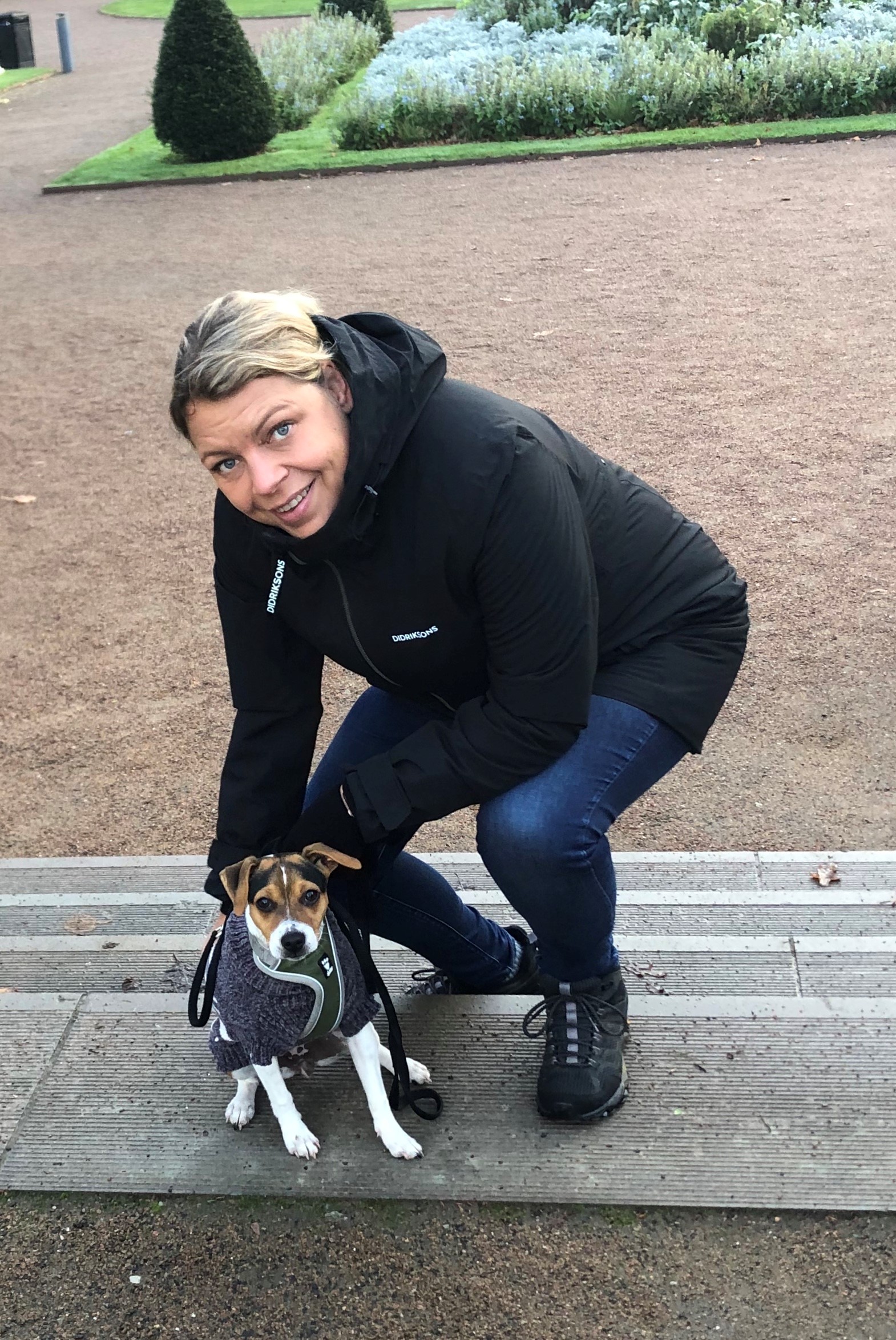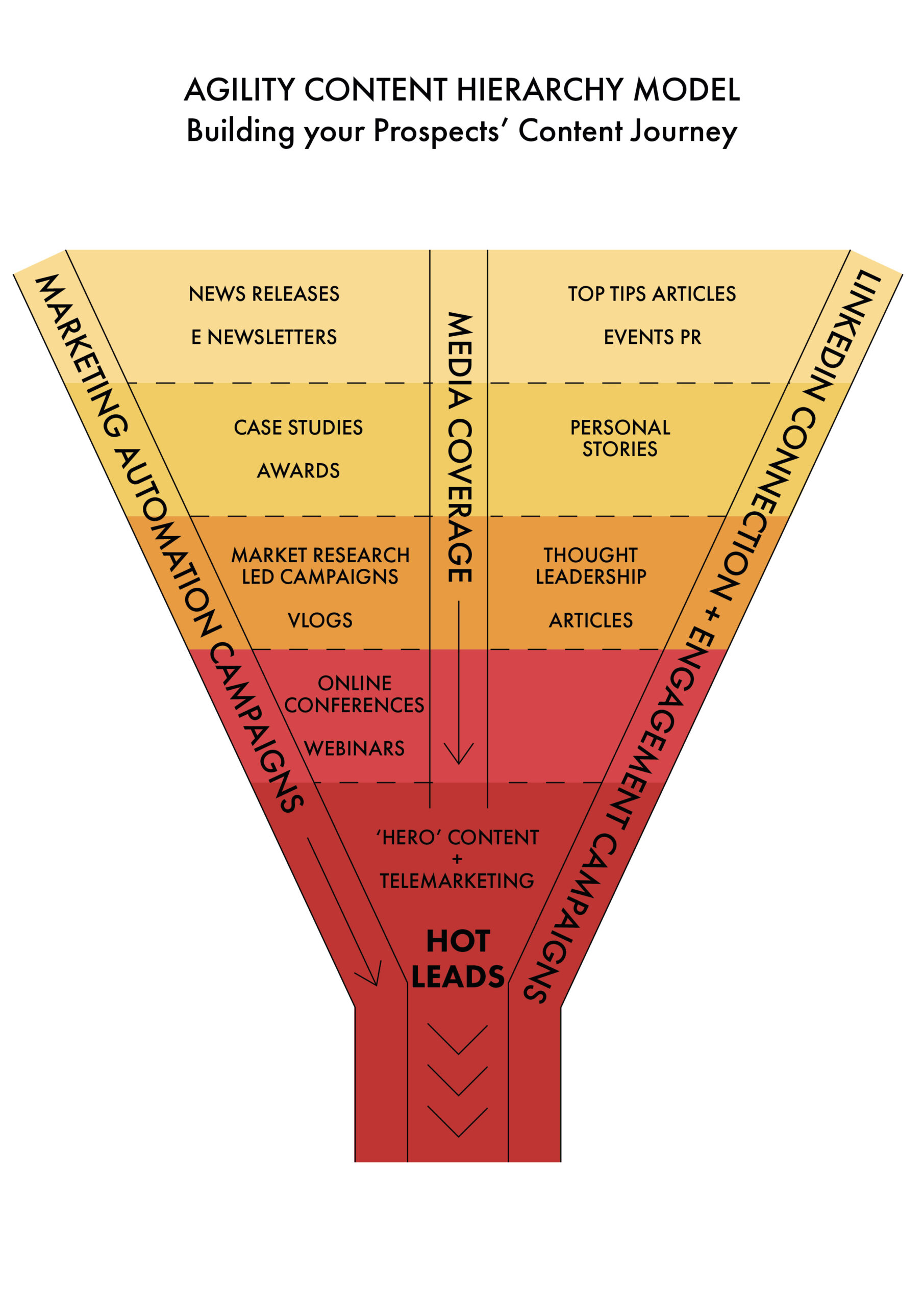Agility PR’s founding client invented the world’s first network camera in 1996; became the industry leader in the IP Surveillance Market it created and was purchased by Canon Inc. in early 2015 for $2.8bn. Today it has annual sales in excess of £1bn and employs more than 3,700 people around the world. That company is Axis Communications.

Kristina Tullberg, Communications Manager, Northern Europe, Axis Communications
I decided to go back to interview Kristina Tullberg (above) who is the Communication Manager for Axis sales region in Northern Europe.
She is also the editor of the Axis regional partner magazine #AxisInnovates. Pre-lockdown she divided her time between the Axis Nordic head office and Axis UK office.
The power of the written word fascinates her. She is an all-round expert on the use of a wide range of communication channels to reach the right audience with the right messages. I hope her knowledge and intuition in communication management shines through in this piece.
The below Q&A-style article is Part 1 of a 3 part series based on a conversation Kristina and I had over the last few weeks. I hope you find her insights into the connected worlds of digital marketing, content creation, content marketing and external communications in general as interesting as I did.
Q1. What are your Top 5 Tips for successfully transitioning from traditional media-led PR to digital marketing from your experience over the last 5-6 years?
A1. Tip #1: Allow yourself a good deal of time to complete the transition to digital marketing.
It’s important to try to carry publishers with you through the digital transition. Some have made highly effective transitions to digital publishing already. So, don’t underestimate their ability to change to support you in the new digital-dominated world. If you give them a challenge, they may well rise to it. Media relationships are still very important but the form and dynamics between media and companies have changed.
Put simply, the media increasingly recognises that it is high quality, engaging content which is king for both parties now. That and the captive audience which their circulation can deliver if we get the content right and distributed in a variety of online channels.
The publishers which can partner with us to help us engage a well-targeted audience of decision-makers, moving them through the sales funnel, are the ones we find most interesting these days. Those that simply offer us hard copy display advertising are not as interesting because we struggle to measure the brand building merits of this approach.
Tip #2: Don’t forget about the content
Early in the transition, there was so much to learn about new digital channels like LinkedIn and marketing automation techniques (we plugged Pardot into our
CRM system) that it was easy to take your eye off the ball in terms of content quality.
The content needs to move online – that’s for sure. However, that doesn’t mean that you should be any less careful about the quality of your content as, in the end, engagement will not be strong unless the content is well written, audience-relevant, and stimulating.
Tip #3: Make sure your ‘content hierarchy’ is strong & build complete campaigns
One of the early mistakes a lot of companies make is to not have an adequate range of content that is needed to pull prospects through the sales funnel. A common mistake is not building these ‘content journeys’ well enough.

Content Hierarchy framework is key to building Content Journeys for Prospects in Digital Marketing
In the early days, we would just try to create sales leads off every piece of content we were creating. It meant that we created loads of sales leads but we were not qualifying those leads well enough. The problem then is Sales were getting too many not well qualified leads and they could not handle the volumes we were creating.
For us, the turning point was thinking in terms of more gradual, layered engagement through campaigns. We used Pardot Engagement Studio to help with this. In this way, it’s possible to distil down from the 250 leads which downloaded our latest White Paper, to the five hot leads which are worth passing through to sales to connect with. Sales can then report what happened to those five hot leads so we can learn from each other and more deeply integrate going forward.
Tip #4: Don’t assume your brand will look after itself
Although some aspects of brand building have been consigned to the dustbin with the transition to digital, brand building itself can still be measured in the digital world, even if the ‘call to action’ isn’t built in.
For example, we’ve been running LinkedIn branding adverts aimed specifically at some of our partners across Northern Europe over the last few months. We’ve been pleasantly surprised how strong the engagement rate has been – in the realm of 4% when industry-typical rates are closer to 0.5%. It’s worked particularly well in the UK actually.
Tip #5: Recognise that digital marketing enables you to localise content
What we’ve come to recognise now that we are about six years into the transition is that audiences are in pockets, they don’t all read the same set of industry publications anymore. They have their own, quite personal media landscapes. When we go online, it’s easier to pick and choose what you read. Your key sources might vary from month to month depending what you are looking for more information on.
“When you go digital, you need to appeal to audiences more individually and on a local basis wherever possible. That could mean that you need to put out more local language content. Even in Sweden, where everyone speaks English, we’ve found content engagement is much higher if we can put out content for a Sweden-only campaign in Swedish. This localisation is becoming increasingly important today because of the huge volume of content being pushed into decision-makers inboxes and social channels each day. This localisation trend has wider implications for websites.”
Q2. What else do marketing departments need to think about when planning the digital switch over?
A2. You need to recognise that it’s a massive learning curve. So, you must be working for a company which enables you to take time out for training in new skills on a range of new channels. I’ve completed so much training over the last two years or so and it’s been essential in terms of getting on top of the new tools as they emerge and making the most of increasingly powerful channels like LinkedIn. So much so, I’m now better at social comms than my kids! Well almost… and I’m not sure they agree😉
It’s important to keep abreast of technical marketing knowledge. This is less of a problem with younger marketers coming out of universities now with strong digital marketing skills. However, for more experienced marketers (like myself) there is a real need to set aside a good deal of their time to keep up to speed. We need to be able to build campaign pages, design, and launch campaigns on LinkedIn and Pardot for example and even if we don’t do the actual job ourselves, we need to understand the logics behind it all.
You need to recognise that effectively you are now a publisher. The skills you need in your marketing department need to include the ability to publish great looking content and analyse results in each channel.
We choose to spread these skills quite widely across the team. However, you may decide you want channel-specific specialists or design specialists who you hand over to once you’re ready to go public with your content. There is not one way fits all when building a modern marketing team, but every company needs to find the way that suits them best.
“You need to recognise that we are going through a fundamental change of the entire marketing profession so don’t underestimate the need for training to bring your people with you.”
Top 5 points I took from this part of my conversation with Kristina were:
1. For larger companies, allow up to 5 years to complete the transition to digital marketing and marketing automation in order to take your media partners with you and to acquire new skills in-house.
2. Don’t compromise on the quality of the content you are producing even though you are likely to be producing more of it for publication across a wider variety of social channels and online publications.
3. Organise your content into campaigns and build ‘content hierarchies’ designed to meet the needs of your target audience(s) at various levels of engagement. Create ‘content journeys’ for discrete groups of prospects.
4. Explore brand building in different ways – using LinkedIn advertising for example, setting engagement level (but not call to action-level) targets for this activity.
5. Firms that are already global or plan to be global over the next few years, need to embrace localisation of content, even extending to localised adaptation and translation of content.
If you found that interesting, check back here to read the second article in this 3-part series on making the transition to digital content marketing. It will be published here on our new Insights page next Wednesday 16th December.

Recent Comments